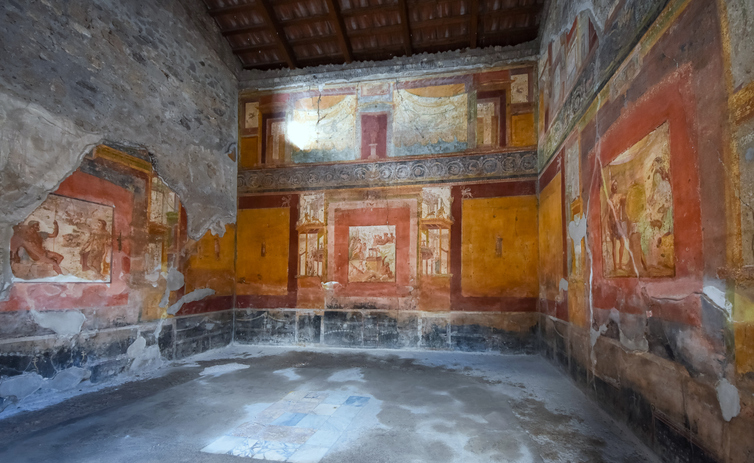Pompeii’s ancient Roman frescoes, shattered and buried for centuries, could get a second life thanks to a pioneering robotic system designed to support archaeologists in one of their most painstaking tasks: reassembling fragmented artefacts.
The technology, developed under an EU-funded project called RePAIR, combines advanced image recognition, AI-driven puzzle-solving, and ultra-precise robotic hands to accelerate traditionally slow and often frustrating restoration work.
Launched in 2021 and coordinated by Venice’s Ca’ Foscari University, the robotic project showcased in Pompeii on Thursday brought together international research teams that have used the archaeological site as their testing ground.
The experimental project “actually started from a very concrete necessity to recompose fragments of frescoes that had been destroyed during the Second World War,” said the site’s director Gabriel Zuchtriegel.
Researchers believe the technology could transform restoration practices worldwide.
The robot uses twin arms equipped with flexible hands in two sizes and vision sensors to identify, grip and assemble fragments without damaging their delicate surfaces.
The once-thriving city of Pompeii, near Naples, and its surrounding countryside were submerged by volcanic ash when Mount Vesuvius exploded in AD 79.
Researchers focused on frescoes preserved in a fragmentary state in Pompeii’s storerooms — two large ceiling paintings which were damaged during the initial eruption and later shattered by bombing in World War Two, and frescoes from the so-called ‘House of the Gladiators’ which collapsed in 2010.
Replicas were created during this initial testing phase to avoid risking the original pieces.
While the robotics teams worked on designing and building the system, experts in artificial intelligence and machine learning developed algorithms to reconstruct the frescoes, matching colours and patterns that may not be visible to the human eye.
Experts say the task is similar to solving a giant jigsaw puzzle, with extra difficulties such as missing pieces and no reference image of the final result.
“It’s like you buy four or five boxes of jigsaw puzzles. You mix everything together, then you throw away the boxes and try to solve four or five puzzles at the same time,” said Marcello Pelillo, the Venice university professor who coordinated the project.
(Reuters)










